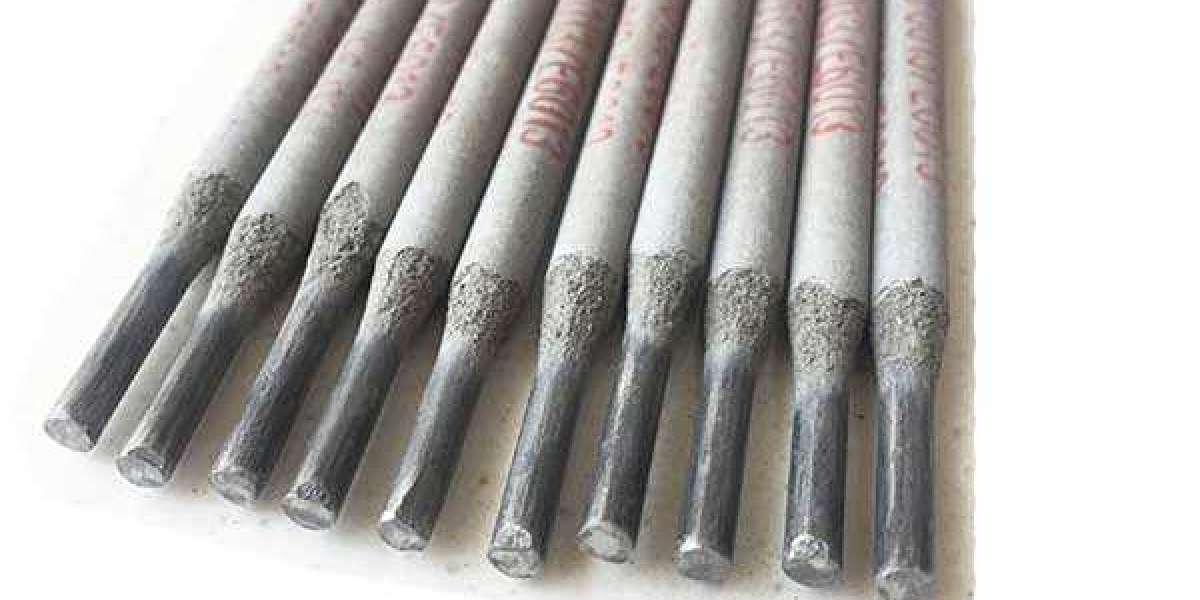In industries where performance under extreme conditions is critical, ordinary welding materials often fall short. This is especially true in aerospace and marine environments, where components are exposed to intense heat, pressure, and corrosive elements. In such cases, Inconel Welding Rods emerge as the preferred choice, offering unmatched strength, heat resistance, and corrosion protection.
Whether used in jet engine parts or deep-sea vessels, Inconel welding rods are engineered for durability and reliability in the toughest conditions. In this blog, we explore the key applications of Inconel Welding Rods in the aerospace and marine sectors and why they are the ideal solution for critical welding needs.
What Are Inconel Welding Rods?
Inconel Welding Rods are filler materials used in the welding of Inconel alloys—a family of nickel-chromium-based superalloys known for their exceptional performance in high-temperature and corrosive environments. These rods are commonly used in Gas Tungsten Arc Welding (GTAW/TIG) and Shielded Metal Arc Welding (SMAW) processes.
Inconel rods typically match the composition of alloys such as Inconel 625, Inconel 718, or Inconel 600, depending on the application. These alloys are specifically designed to maintain their mechanical strength and resistance to oxidation even at temperatures exceeding 1000°C.
Why Inconel Welding Rods Are Preferred
In aerospace and marine environments, materials must endure:
High thermal stress
Corrosive saltwater or acidic chemicals
Mechanical loads and vibrations
Pressure changes and fatigue cycles
Inconel welding rods meet these challenges by offering:
High tensile strength
Excellent resistance to corrosion and oxidation
Good weldability with minimal cracking
Superior fatigue and creep resistance
These characteristics make them essential in applications where failure is not an option.
Applications in the Aerospace Industry
The aerospace sector is one of the largest consumers of Inconel alloys and welding materials. Components in this field operate under extreme thermal and mechanical stress, especially in jet engines and turbine systems.
1. Jet Engines and Turbine Components
Inconel welding rods are used to fabricate and repair parts such as:
Combustion chambers
Exhaust ducts
Turbine blades and vanes
Afterburners
These components face intense heat and pressure. Inconel rods maintain structural integrity and resist creep, fatigue, and oxidation over long service periods.
2. Rocket Motors and Propulsion Systems
The high-speed combustion of rocket fuels generates extreme heat and stress. Inconel welding rods are employed in:
Nozzle assemblies
Combustion chambers
Propellant conduits
They ensure strong welds that withstand rapid temperature changes and intense mechanical loads without degrading.
3. Structural Assemblies
While not as heat-intensive as engines, airframe structures also benefit from Inconel welding rods, especially in areas where weight reduction and durability are essential.
Fastener housings
Brackets and supports
Sensor mounts exposed to external temperatures
The corrosion resistance of Inconel prevents deterioration from atmospheric exposure, extending service life.
Applications in the Marine Industry
The marine industry operates in highly corrosive environments due to constant exposure to saltwater, humidity, and changing pressures. Inconel welding rods are ideal for constructing and maintaining durable marine infrastructure.
1. Submarine and Deep-Sea Vessels
Inconel welding rods are used in the fabrication and repair of:
Pressure hulls
Ballast systems
Propulsion units
The alloy’s resistance to saltwater corrosion and its ability to maintain strength under pressure make it perfect for deep-ocean applications.
2. Offshore Oil and Gas Platforms
Offshore rigs operate in harsh sea conditions where mechanical systems must resist corrosion, erosion, and fatigue. Inconel welding rods are used in:
Pump housings
Flare stacks
Subsea connectors
Welds made with Inconel remain strong and stable, ensuring system integrity and minimizing downtime.
3. Marine Heat Exchangers and Boilers
Inconel's high thermal conductivity and resistance to scaling make it suitable for heat exchangers and boiler systems in marine vessels.
Welds are resistant to:
Chloride stress corrosion cracking
Pitting and crevice corrosion
Thermal cycling degradation
Benefits of Using Inconel Welding Rods in Harsh Environments
• Corrosion Resistance
Inconel rods provide superior resistance to oxidation and corrosion caused by saltwater, acids, and chlorides, making them ideal for marine and aerospace settings.
• Heat Resistance
These rods maintain their mechanical properties at high temperatures, essential for jet engines, turbines, and combustion systems.
• Durability
Welds created using Inconel welding rods are strong, ductile, and fatigue-resistant, reducing the risk of failure during operation.
• Versatility
They can be used with various base metals, including stainless steel and other nickel-based alloys, allowing flexible application in diverse assemblies.
Choosing the Right Inconel Welding Rod
Different grades of Inconel welding rods are available, including:
Inconel 625: Excellent corrosion resistance and weldability
Inconel 718: Suitable for high-strength applications and cryogenic conditions
Inconel 600: General-purpose welding rod for corrosion and heat resistance
When selecting the right rod, consider:
Operating temperature
Type of corrosive exposure
Mechanical stress requirements
Base metal compatibility
Final Thoughts
Inconel Welding Rods are the go-to solution when performance, reliability, and resistance to extreme conditions are critical. Their proven success in aerospace and marine industries speaks volumes about their durability and versatility.
Whether you’re building jet engines or maintaining deep-sea vessels, investing in Inconel welding materials ensures high-strength welds that stand the test of time. With the right grade and application, Inconel rods help engineers and fabricators achieve superior safety, efficiency, and long-term performance in some of the most demanding environments on Earth.







